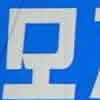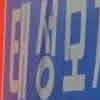Basics - Lesson 2 - Double Vowels (모음) Lesson
|
ㅐ eir |
ㅒ yeir |
ㅔ ere |
ㅖ yere |
ㅘ wa |
|
ㅙ where |
ㅝ wo |
ㅞ weo |
ㅟ weou |
ㅢ wei |
1. Understanding the Basics: Korean double vowels are a combination of two vowels that are used to form a single syllable. The two vowels are always written together, without a space in between, and are pronounced as one sound. The most common double vowels in Korean are ㅐ (ae), ㅔ (e), ㅚ (oe), ㅟ (wi), ㅢ (ui), ㅙ (yae), ㅞ (we), and ㅝ (wo).
2. Pronunciation: When pronouncing double vowels, it’s important to remember that you should still pronounce each of the two vowels separately. For example, when saying the double vowel ㅐ (ae), you should pronounce it as “ah-eh”. Similarly, when saying ㅔ (e), you should pronounce it as “eh-eh”. This is true for all of the double vowels.
3. Practice: Practicing double vowels can be done in a few different ways. You can start by reading a Korean text aloud and focusing on the double vowels. Try to pronounce them correctly and to make sure that each vowel is pronounced separately. Another way to practice is to write out the double vowels and then practice saying them out loud.
\n\n1. Understanding the Basics:\n\nKorean double vowels are a combination of two vowels that are used to form a single syllable. The two vowels are always written together, without a space in between, and are pronounced as one sound. The most common double vowels in Korean are ㅐ (ae), ㅔ (e), ㅚ (oe), ㅟ (wi), ㅢ (ui), ㅙ (yae), ㅞ (we), and ㅝ (wo).\n\n2. Pronunciation:\n\nWhen pronouncing double vowels, it’s important to remember that you should still pronounce each of the two vowels separately. For example, when saying the double vowel ㅐ (ae), you should pronounce it as “ah-eh”. Similarly, when saying ㅔ (e), you should pronounce it as “eh-eh”. This is true for all of the double vowels.\n\n3. Practice:\n\nPracticing double vowels can be done in a few different ways. You can start by reading a Korean text aloud and focusing on the double vowels. Try to pronounce them correctly and to make sure that each vowel is pronounced separately. Another way to practice is to write out the double vowels and then practice saying them out loud. In Korean there are basic vowels that you should take note of are the 10 basic vowels, these are ㅏ(a),ㅑ(ya),ㅓ(eo),ㅕ(yeo), ㅗ(o), ㅛ(yo), ㅜ(u), ㅠ(yu), ㅡ(eu), ㅣ(e).
In order to compose the double vowels, you would use a combination of these 10 basic vowels in order to compose of double vowels to create the 11 new double vowels, these are as above ㅐ(ae),ㅒ(yae), ㅔ(e), ㅖ(ye), ㅘ(wa), ㅙ(wae), ㅚ(oe), ㅝ(wo), ㅞ(weh), ㅟ(wui), ㅢ(ui).
The exception to the combinations of double vowels are ㅙ and ㅞ. These are combined by adding ㅗ to ㅐand ㅜ to ㅔ.

Using what you have learnt from the first 2 lessons write the following in Korean script.
- Hamkke
- Kayo
- Apateu
- Uri
Now put the following Korean words into Konglish
- 어디야?
- 사랑해
- 나 배고파
Double Vowels Exercises
Identify and Write
Q: Write the double vowel that combines ㅗ (o) and ㅏ (a).
A: 와
Q: Which double vowel is formed by ㅜ (u) and ㅓ (eo)?
A: 워
Q: Identify the double vowel combining ㅡ (eu) and ㅣ (i).
A: 의
Q: What double vowel results from combining ㅏ (a) and ㅣ (i)?
A: 애
Q: Choose the double vowel made by ㅓ (eo) and ㅏ (a).
A: 여
Forming Syllables
Q: Form a syllable with ㄱ (g) + 와.
A: 과
Q: What syllable is formed by ㅂ (b) + 워?
A: 버
Q: Create a syllable using ㅅ (s) + 의.
A: 쉬
Q: Combine ㅁ (m) + 애 to form a syllable.
A: 매
Q: Form a syllable with ㄴ (n) + 여.
A: 녀
Korean Words with Double Vowels
Q: Use 와 to write the word for "fruit" in Korean.
A: 과일 (gwail)
Q: Write "teacher" in Korean using 애.
A: 선생님 (seonsaengnim)
Q: How do you spell "west" in Korean using 여?
A: 서쪽 (seo-jjok)
Q: Use 의 to write the Korean word for "doctor".
A: 의사 (uisa)
Q: Write "apple" in Korean using 애.
A: 애 (애플, aepul) - Note: This is a trick question, as 애플 is a Konglish word and does not use a double vowel in a traditional sense but demonstrates the flexibility in language.
Konglish with Double Vowels
Q: How do you write "orange" (the fruit) in Hangul?
A: 오렌지 (orenji)
Q: Translate "menu" into Hangul.
A: 메뉴 (menyu)
Q: Write the Korean spelling for "taxi".
A: 택시 (taeksi) - Note: This is a straightforward translation without the explicit use of a double vowel, highlighting the importance of recognizing double vowels in various contexts.
Q: How is "diet" spelled in Hangul?
A: 다이어트 (dai-eoteu)
Q: Translate "video" into Hangul.
A: 비디오 (bidio)
<< Previous Lesson Next Lesson >>
Donate just £2 to use to help keep us FREE.


 Learn-Korean
Learn-Korean









